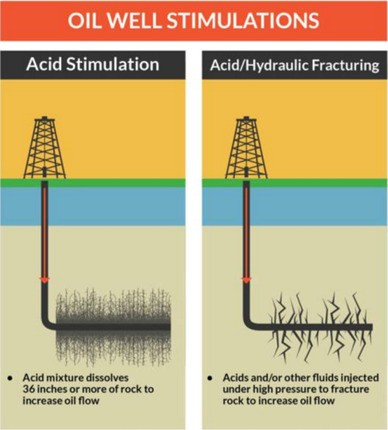Update 2021-06-15:
Right to Clean Water, and four more Florida ballot initiatives 2021-05-20.
Update 2021-02:
New York State Environmental Rights Amendment for November 2021 ballot:
“Each person shall have a right to clean air and water, and a healthful environment.”
See also the 1972 Montana precedent.
Update 2021-02-24:
The regulatory trap at SRWMD: 30 speakers, yet unanimous Nestlé permit 2021-02-23.
Update 2021-01-31:
Green Amendment Passes in the New York State Legislature.
Update 2021-01-22:
Orange County, Florida (home of Orlando) passed a Bill of Rights for Nature, becoming the most populous local government area in the U.S. to do so; see below.
Does it seem most of the agencies, laws, and rules are rigged for
big corporations and against local private property rights, against local fishing, swimming, boating, and hunting, and against organizations like Riverkeepers and Waterkeepers?
![[Sabal Trail fracked methane pipeline, titanium mine too near Okefenokee Swamp, Suwannee River Basin]](https://www.wwals.net/pictures/2021-01-22--born/many.jpg)
Sabal Trail fracked methane pipeline, titanium mine too near Okefenokee Swamp, Suwannee River Basin.
See also WWALS map of all public landings in the Suwannee River Basin.
One approach to change that is a Bill of Rights for Nature (BOR), to
change the legal structure so rivers, swamps, aquifers, lakes, etc.
presumptively have rights that corporations have to prove they are
not violating.
There are at least three ways to do this:
personhood for a waterbody,
a Bill of Rights for Nature spelling out specific rights such as to exist and to flow unpolluted,
or human rights to clean air and water, commonly known as a Green Amendment.
Examples
First, here are some examples of why rights of nature would be useful.
Example: a titanium strip mine proposed too near the Okefenokee Swamp
For example, Suwannee Riverkeeper is helping oppose a company that
wants to mine titanium within three miles of the Okefenokee Swamp,
which is the headwaters of the Suwannee and St. Mary’s Rivers, and
above the Floridan Aquifer, from which all of south Georgia and
north Florida drinks.
![[Tribal Grounds west along GA 94 to TPM equipment, 12:38:38, 30.5257540, -82.0411100]](https://wwals.net/pictures/2019-10-05--equipment-tpm/triba-grounds-to-TPM-equipment.jpg)
Tribal Grounds west along GA 94 to TPM equipment, 12:38:38.
Photo:
John S. Quarterman for WWALS, on Southwings flight, pilot Allen Nodorft, 2019-10-05.
We shouldn’t have to get
more than 20,000 60,000 comments sent to the U.S.
Army Corps of Engineers pointing out that the Okefenokee National
Wildlife Refuge contributes far more jobs (700+) and other economic
benefits (more than $60 million/year) to the region and to Florida
and Georgia than even the wildest promises of the miners (150-200 as
in the application? 300? 350, as they told some reporters?), and the mine would risk all that, including boating, fishing, and birding in the Swamp and hunting around it. We
should be able to point to the rights of the Swamp, Rivers, and
Aquifer, and the miners should have to prove beyond a shadow a doubt
that they would not violate them.
Update 2021-01-22:
And then the Army Corps abdicated oversight in late 2020,
leaving only the State of Georgia standing between the miners and Swamp with their five permit applications to the Georgia Department of Environmental Protection.
![[Twin Pines Minerals mine land, maps, Cherokee of Georgia Tribal Grounds]](https://www.wwals.net/pictures/2021-01-10--southwings-oke/many.jpg)
Twin Pines Minerals mine land, maps, Cherokee of Georgia Tribal Grounds, photographs by Southwings pilot Chris Carmel on a flight for Suwannee Riverkeeper, 2021-01-10.
You can help, by asking the Georgia Governor and other elected and appointed officials to reject or at least thoroughly review those permit applications.
Example: the Sabal Trail fracked methane pipeline
When
the Georgia House of Representatives overwhelmingly refused to
grant easements for the Sabal Trail fracked methane pipeline to
drill under Georgia rivers, Continue reading →
![[2019-12-17--WWALS-GA-EPD-Valdosta-sewage-0001]](https://www.wwals.net/pictures/2019-12-17--wwals-ga-epd-valdosta-sewage/2019-12-17--WWALS-GA-EPD-Valdosta-sewage-0001.jpg)

![[the proposed project will have a substantial and unacceptable impact on aquatic resources of national importance.]](https://www.wwals.net/pictures/2019-10-03--epa-usace-tpm/SCAN0007-0001.jpg)
![[Please Deny Seven Springs permit renewal, Ginnie Springs, Santa Fe River]](https://www.wwals.net/pictures/2019-12-09--wwals-srwmd-nestle/2019-12-09--wwals-srwmd-nestle-0001.jpg)
![[Suwannee Riverkeeper John S. Quarterman beside banner; Mike Roth of OSFR speaking]](https://www.wwals.net/pictures/2019-12-05--no-roads-to-ruin-tlh/20191205_114427.jpg)
![[Nestle-madison-blue-spring]](https://www.wwals.net/pictures/2019-12-10--srwmd-packet/nestle-madison-blue-spring.jpg)



![[TPM Equipment closeup, Wayne Morgan]](https://www.wwals.net/pictures/2019-10-05--equipment-tpm/WAM_0876.jpg)
![[Figure 8. Drawdown 2930 days]](https://www.wwals.net/pictures/2019-07-24--tpm-ga-epd-water-withdrawal/424772086-7-24-19-Final-Application-for-Industrial-Groundwater-Withdrawal-Permit-0044.jpg)
![[Sabal Trail fracked methane pipeline, titanium mine too near Okefenokee Swamp, Suwannee River Basin]](https://www.wwals.net/pictures/2021-01-22--born/many.jpg)
![[Tribal Grounds west along GA 94 to TPM equipment, 12:38:38, 30.5257540, -82.0411100]](https://wwals.net/pictures/2019-10-05--equipment-tpm/triba-grounds-to-TPM-equipment.jpg)
![[Twin Pines Minerals mine land, maps, Cherokee of Georgia Tribal Grounds]](https://www.wwals.net/pictures/2021-01-10--southwings-oke/many.jpg)